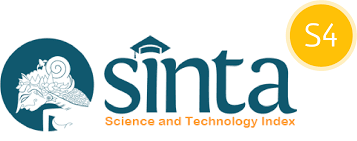Algoritma Random Forest Untuk Prediksi Kelangsungan Hidup Pasien Gagal Jantung Menggunakan Seleksi Fitur Bestfirst
DOI:
https://doi.org/10.29408/jit.v5i2.5896Keywords:
Gagal Jantung, Random Forest, Bestfirst, Class BalancerAbstract
Heart failure is a global health problem that not only causes physical problems, other impacts such as psychological, social, and economic, as well as depression, which affects treatment, worsens functional status, and increases hospitalization rates to death. According to the World Health Organization (WHO), nearly 17.5 million people die from cardiovascular disease, which represents 31% of deaths in the world. Using machine learning to predict the survival of patients with heart failure so that they can take precautions from the start. The stages of the research carried out include the business understanding stage, the data understanding stage, the data preparation stage, the modeling stage, and the evaluation stage. In this study, using feature selection using best-first resulted in 4 very influential features, namely age, injection_fraction, serum_creatinene and time, and handling imbalance class using the class balancer model. Random forest algorithm with 80% percentage split method which produces 91.45% accuracy, mean absolute error 0.1874, incorrectly classified instances 8.55%, precision 0.915, recall 0.914, AUC 0.953.
References
L. Ali et al., “A Feature-Driven Decision Support System for Heart Failure Prediction Based on χ2 Statistical Model and Gaussian Naive Bayes,” Comput. Math. Methods Med., vol. 2019, 2019, doi: 10.1155/2019/6314328.
Nursyamsiah and R. Hasan, “High-sensitivity c-reactive protein (hs-CRP) value with 90 days mortality in patients with heart failure,” IOP Conf. Ser. Earth Environ. Sci., vol. 125, no. 1, 2018, doi: 10.1088/1755-1315/125/1/012124.
T. R. Heallen, Z. A. Kadow, J. H. Kim, J. Wang, and J. F. Martin, “Stimulating Cardiogenesis as a Treatment for Heart Failure,” Circ. Res., vol. 124, no. 11, pp. 1647–1657, 2019, doi: 10.1161/CIRCRESAHA.118.313573.
S. E. Awan, M. Bennamoun, F. Sohel, F. M. Sanfilippo, and G. Dwivedi, “Machine learning-based prediction of heart failure readmission or death: implications of choosing the right model and the right metrics,” ESC Hear. Fail., vol. 6, no. 2, pp. 428–435, 2019, doi: 10.1002/ehf2.12419.
A. P. Utami, Fitri, “Gambaran Karakteristik Personal pada Pasien Gagal Jantung: A Narrative Review Article,” J. Ilm. Keperawatan Indones., vol. 5, no. 1, pp. 45–57, 2022, [Online]. Available: https://www.google.com/search?q=jurnal+ilmiah+keperawatan&ie=utf-8&oe=utf-8
N. R. Jones, A. K. Roalfe, I. Adoki, F. D. R. Hobbs, and C. J. Taylor, “Survival of patients with chronic heart failure in the community: a systematic review and meta-analysis,” Eur. J. Heart Fail., vol. 21, no. 11, pp. 1306–1325, 2019, doi: 10.1002/ejhf.1594.
M.- Kamal, “Potential effectiveness of sleep hygiene and relaxation Benson in improving the quality of sleep in patients with heart failure: Literature review,” Int. J. Nurs. Heal. Serv., vol. 2, no. 1, pp. 101–107, 2019, doi: 10.35654/ijnhs.v2i1.69.
T. Ahmad et al., “Machine learning methods improve prognostication, identify clinically distinct phenotypes, and detect heterogeneity in response to therapy in a large cohort of heart failure patients,” J. Am. Heart Assoc., vol. 7, no. 8, pp. 1–14, 2018, doi: 10.1161/JAHA.117.008081.
F. M. Zahid, S. Ramzan, S. Faisal, and I. Hussain, “Gender based survival prediction models for heart failure patients: A case study in Pakistan,” PLoS One, vol. 14, no. 2, pp. 1–10, 2019, doi: 10.1371/journal.pone.0210602.
Z. Kucukakcali, I. B. Cicek, E. Guldogan, and C. Colak, “ASSESSMENT OF ASSOCIATIVE CLASSIFICATION APPROACH FOR PREDICTING MORTALITY BY HEART FAILURE,” J. Cogn. Syst., vol. 5, no. 2, pp. 41–45, 2020.
D. Chicco and G. Jurman, “Machine learning can predict survival of patients with heart failure from serum creatinine and ejection fraction alone,” BMC Med. Inform. Decis. Mak., vol. 20, no. 1, pp. 1–16, 2020, doi: 10.1186/s12911-020-1023-5.
M. T. Le, M. T. Vo, N. T. Pham, and S. V. T. Dao, “Predicting heart failure using a wrapper-based feature selection,” Indones. J. Electr. Eng. Comput. Sci., vol. 21, no. 3, pp. 1530–1539, 2021, doi: 10.11591/ijeecs.v21.i3.pp1530-1539.
R. Fadli, “Gagal Jantung.”
P. Pittara, “Gagal Jantung,” Alodokter, 2022. https://www.alodokter.com/gagal-jantung
B. A. Candra Permana and I. K. Dewi Patwari, “Komparasi Metode Klasifikasi Data Mining Decision Tree dan Naïve Bayes Untuk Prediksi Penyakit Diabetes,” Infotek J. Inform. dan Teknol., vol. 4, no. 1, pp. 63–69, 2021, doi: 10.29408/jit.v4i1.2994.
S. Suhartini and R. Yuliani, “Penerapan Data Mining untuk Mengcluster Data Penduduk Miskin Menggunakan Algoritma K-Means di Dusun Bagik Endep Sukamulia Timur,” Infotek J. Inform. dan Teknol., vol. 4, no. 1, pp. 39–50, 2021, doi: 10.29408/jit.v4i1.2986.
A. Wiraguna, S. Al Faraby, and Adiwijaya, “Klasifikasi Topik Multi Label pada Hadis Bukhari dalam Terjemahan Bahasa Indonesia Menggunakan Random Forest,” e-Proceeding Eng., vol. 6, no. 1, pp. 2144–2153, 2019.
I. Maulana, M. Irawan Padli Nasution, and A. Ikhwan, “Aplikasi Pendaftaran Siswa Baru Menggunakan Algoritma Best First Search pada SMP Negeri 1 Medab,” J. Chem. Inf. Model., vol. 53, no. 9, pp. 1689–1699, 2020.
L. I. Liana and S. R. Nudin, “Implementasi Algoritma Best-First Search untuk Aplikasi Mesin Pencari Handphone pada E-commerce (Apenphone),” J. Informatics Comput. Sci., vol. 2, no. 01, pp. 67–73, 2020, doi: 10.26740/jinacs.v2n01.p67-73.
Larxel, “Heart Failure Prediction,” Kaggle, 2020. https://www.kaggle.com/datasets/andrewmvd/heart-failure-clinical-data
Aris Sudianto and L. M. Samsu, “Penerapan Media Pembelajaran Interaktif Pelajaran Bahasa Indonesia Berbasis Android Untuk Kelas Vii Madrasah Tsanawiyah Nahdlatul Wathan Ketangga Sebagai Upaya Untuk Peningkatkan Minat Belajar Siswa,” vol. 2, no. 2, pp. 5–10, 2019.
Downloads
Additional Files
Published
How to Cite
Issue
Section
License
Semua tulisan pada jurnal ini menjadi tanggung jawab penuh penulis. Jurnal Infotek memberikan akses terbuka terhadap siapapun agar informasi dan temuan pada artikel tersebut bermanfaat bagi semua orang. Jurnal Infotek ini dapat diakses dan diunduh secara gratis, tanpa dipungut biaya sesuai dengan lisense creative commons yang digunakan.
Jurnal Infotek is licensed under a Creative Commons Attribution 4.0 International License.
Statistik Pengunjung




